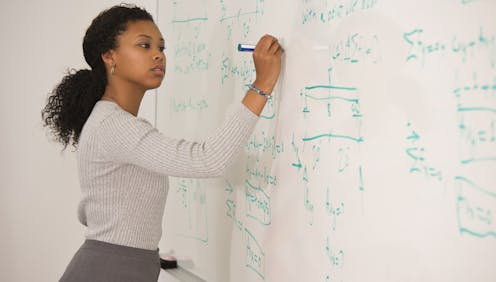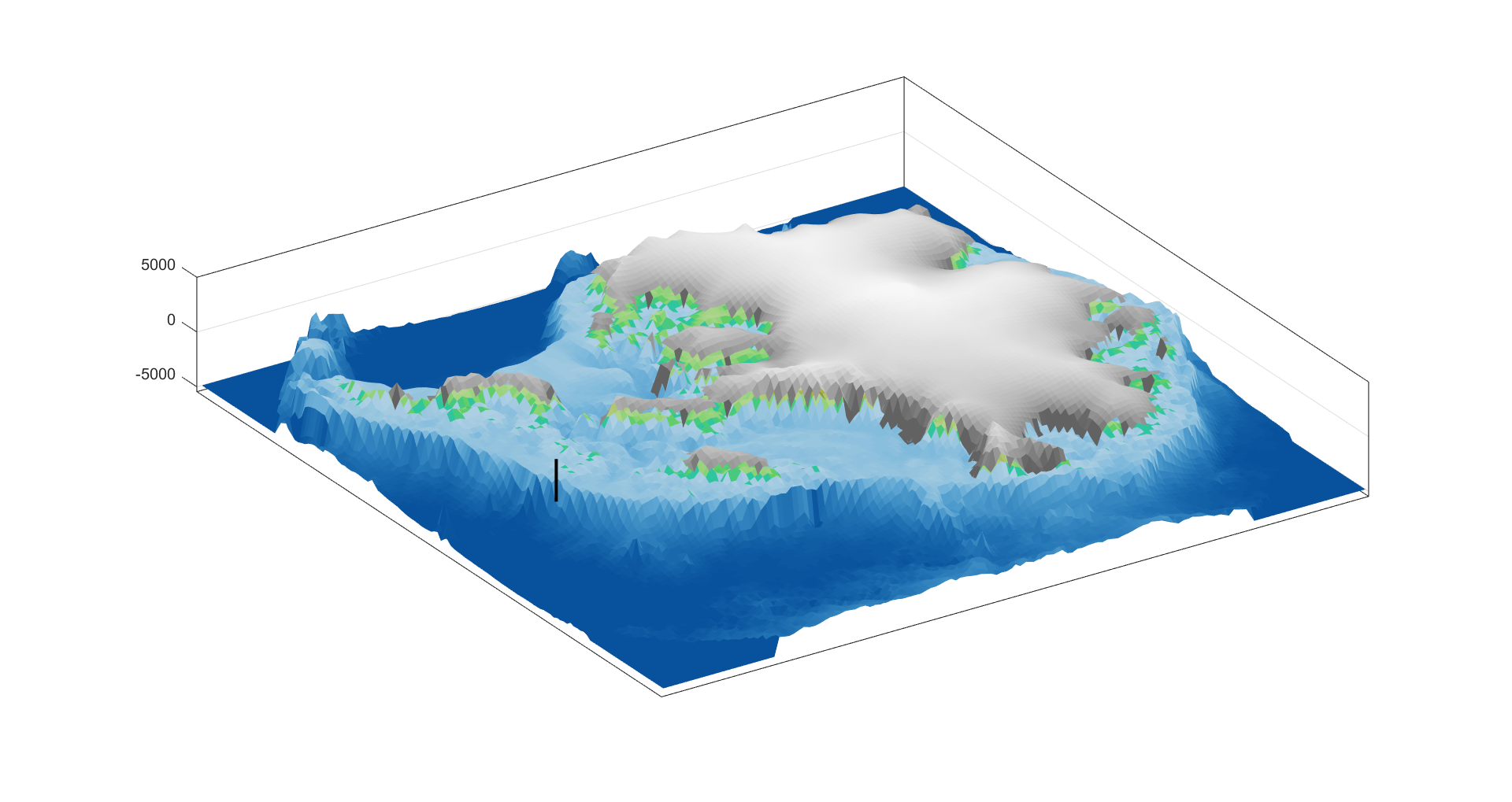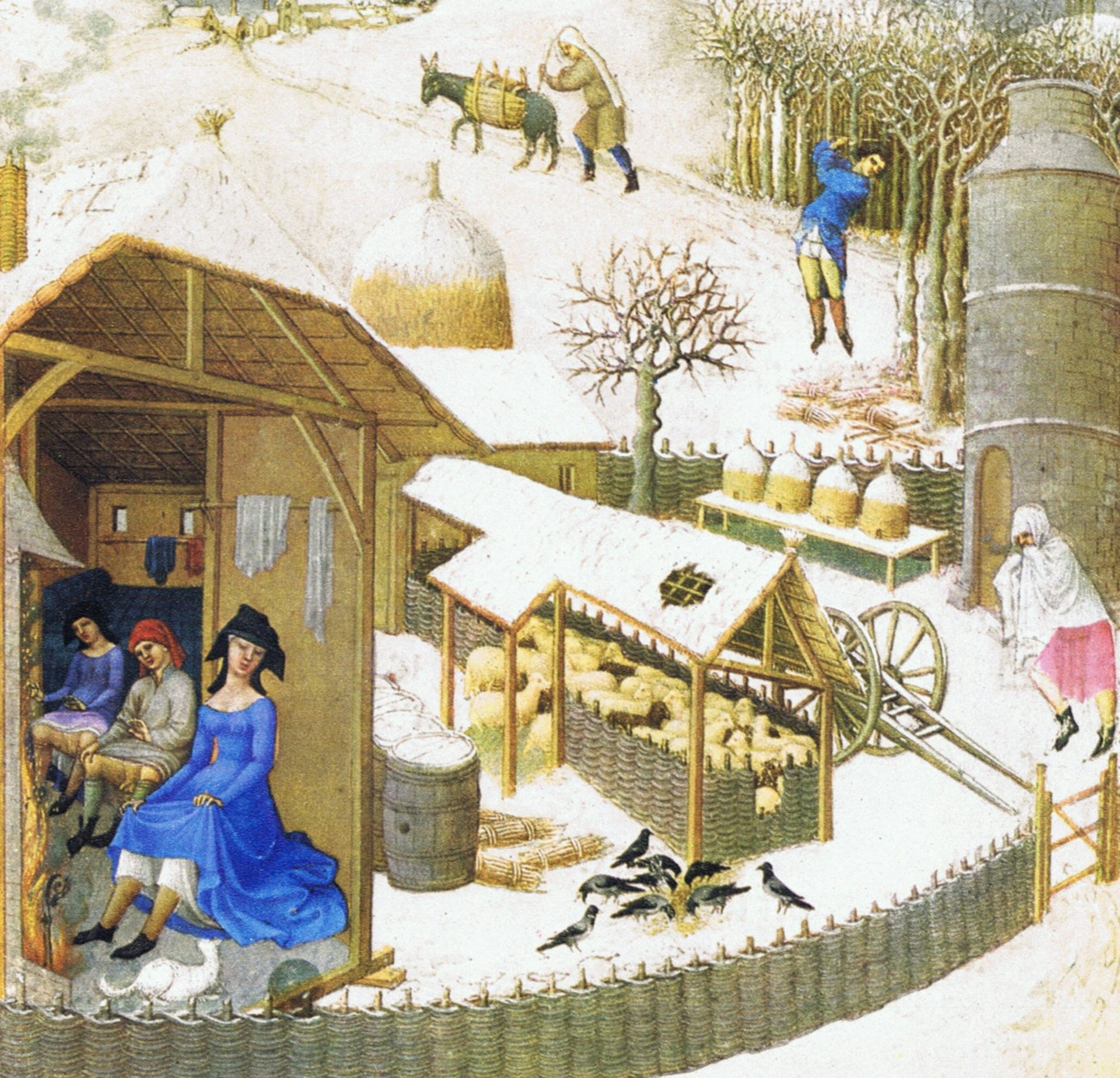Want to solve a complex problem? Applied math can help
Applied mathematicians translate real situations into mathematical terms.

You can probably think of a time when you’ve used math to solve an everyday problem, such as calculating a tip at a restaurant or determining the square footage of a room. But what role does math play in solving complex problems such as curing a disease?
In my job as an applied mathematician, I use mathematical tools to study and solve complex problems in biology. I have worked on problems involving gene and neural networks such as interactions between cells and decision-making. To do this, I create descriptions of a real-world situation in mathematical language. The act of turning a situation into a mathematical representation is called modeling.
Translating real situations into mathematical terms
If you ever solved an arithmetic problem about the speed of trains or cost of groceries, that’s an example of mathematical modeling. But for more difficult questions, even just writing the real-world scenario as a math problem can be complicated. This process requires a lot of creativity and understanding of the problem at hand and is often the result of applied mathematicians working with scientists in other disciplines.

As an example, we could represent a game of Sudoku as a mathematical model. In Sudoku, the player fills empty boxes in a puzzle with numbers between 1 and 9 subject to some rules, such as no repeated numbers in any row or column.
The puzzle begins with some prefilled boxes, and the goal is to figure out which numbers go in the rest of the boxes.
Imagine that a variable, say x, represents the number that goes in one of those empty boxes. We can guarantee that x is between 1 and 9 by saying that x solves the equation (x-1)(x-2) … (x-9)=0. This equation is true only when one of the factors on the left side is zero. Each of the factors on the left side is zero only when x is a number between 1 and 9; for example, (x-1)=0 when x=1. This equation encodes a fact about our game of Sudoku, and we can encode the other features of the game similarly. The resulting model of Sudoku will be a set of equations with 81 variables, one for each box in the puzzle.
Another situation we might model is the concentration of a drug, say aspirin, in a person’s bloodstream. In this case, we would be interested in how the concentration changes as we ingest aspirin and the body metabolizes it. Just like with Sudoku, one can create a set of equations that describe how the concentration of aspirin evolves over time and how additional ingestion affects the dynamics of this medication. In contrast to Sudoku, however, the variables that represent concentrations are not static but rather change over time.

But the act of modeling is not always so straightforward. How would we model diseases such as cancer? Is it enough to model the size and shape of a tumor, or do we need to model every single blood vessel inside the tumor? Every single cell? Every single chemical in each cell? There is much that is unknown about cancer, so how can we model such unknown features? Is it even possible?
Applied mathematicians have to find a balance between models that are realistic enough to be useful and simple enough to be implemented. Building these models may take several years, but in collaboration with experimental scientists, the act of trying to find a model often provides novel insight into the real-world problem.
Mathematical models help find real solutions
After writing a mathematical problem to represent a situation, the second step in the modeling process is to solve the problem.
For Sudoku, we need to solve a collection of equations with 81 variables. For the aspirin example, we need to solve an equation that describes the rate of change of concentrations. This is where all the math that has been and is still being invented comes into play. Areas of pure math such as algebra, analysis, combinatorics and many others can be used – in some cases combined – to solve the complex math problems arising from applications of math to the real world.
The third step of the modeling process consists of translating the mathematical solution into the solution to the applied problem. In the case of Sudoku, the solution to the equations tells us which number should go in each box to solve the puzzle. In the case of aspirin, the solution would be a set of curves that tell us the aspirin concentration in the digestive system and bloodstream. This is how applied mathematics works.
When creating a model isn’t enough
Or is it? While this three-step process is the ideal process of applied math, reality is more complicated. Once I reach the second step where I want the solution of the math problem, very often, if not most of the time, it turns out that no one knows how to solve the math problem in the model. In some cases, the math to study the problem doesn’t even exist.
For example, it is difficult to analyze models of cancer because the interactions between genes, proteins and chemicals are not as straightforward as the relationships between boxes in a game of Sudoku. The main difficulty is that these interactions are “nonlinear,” meaning that the effect of two inputs is not simply the sum of the individual effects. To address this, I have been working on novel ways to study nonlinear systems, such as Boolean network theory and polynomial algebra. With this and traditional approaches, my colleagues and I have studied questions in areas such as decision-making, gene networks, cellular differentiation and limb regeneration.
When approaching unsolved applied math problems, the distinction between applied and pure mathematics often vanishes. Areas that were considered at one time too abstract have been exactly what is needed for modern problems. This highlights the importance of math for all of us; current areas of pure mathematics can become the applied mathematics of tomorrow and be the tools needed for complex, real-world problems.
Alan Veliz-Cuba has received funding from the Simons Foundation and the American Mathematical Society for some of his research.
Read These Next
West Antarctica’s history of rapid melting foretells sudden shifts in continent’s ‘catastrophic’ geo
A picture of what West Antarctica looked like when its ice sheet melted in the past can offer insight…
As DOJ begins to release Epstein files, his many victims deserve more attention than the powerful me
Powerful men connected to Jeffrey Epstein are named, dissected and speculated about. The survivors,…
How to reduce gift-giving stress with your kids – a child psychologist’s tips for making magic and a
Depending on family circumstances and a child’s personality type, gift giving runs the gamut of fun…






